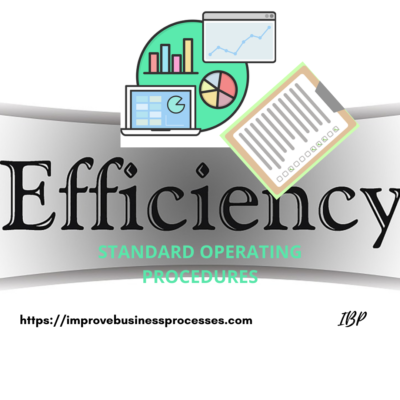One of the biggest challenges that business owners face is managing the day-to-day operations of their business. The journey to create business systems holds the key to transforming the way you manage your operations.
As your business grows, the complexities multiply, leading to chaos, confusion, and inefficiencies.
This is where systems thinking and systems come in. Creating systems and processes within your business can help you to streamline your operations, improve productivity, and increase your bottom line.
By establishing a set of procedures that guide your employees through various tasks, you can reduce errors, increase consistency, and free up your time to focus on other important aspects of your business.
This article looks at how to create systems in your business, from identifying areas that need improvement to implementing new processes and procedures.
Whether you are a solopreneur or managing a team of employees, you will find the guidance and tools to transform your business from chaos to clarity.

6 Main Benefits When You Create Business Systems
There are several benefits to be derived creating systems and processes within your business. 6 of the main benefits are listed below.
Overall, creating systems and processes within your business can help you to run your business more efficiently, reduce errors, improve quality, and free up time to focus on other important aspects of your business
Increased Efficiency
Systems and processes can help you to complete tasks more efficiently by providing a structured framework that guides your employees through different steps in a process.
This can reduce the time and effort required to complete tasks and help you to get more done in less time.
Create Business Systems for Consistency of Operations
Having systems and processes can help ensure that tasks are completed in a consistent manner with high quality standard. By defining clear procedures, you can reduce errors and improve the quality of your products or services.
Scalability
As your business grows, systems and processes become increasingly important. By establishing a set of procedures that can be replicated, you can scale your business without sacrificing quality or consistency.
Increased Productivity
Systems and processes can help to eliminate inefficiencies and reduce wasted time, which can increase productivity and free up time for more important tasks for everyone in the business.
Improved Employee Performance
Systems and processes provide a clear structure for your employees to follow, which can improve their performance and reduce the need for constant supervision.
Improved Decision Making
By creating systems and processes, you can gather data and analyze performance metrics to make more informed business decisions.
How to Identify Areas That Need Improvement
Identifying areas that need improvement is an important step in creating effective systems and processes within your business as it puts the business under an “analytical microscope” to provide clarity through the chaos.
By using these simple methods, you can identify those areas and develop a plan to address them.
Analyze Customer Feedback
Your customers can provide valuable insights into areas of your business that need improvement. Review customer feedback, comments, and reviews to identify patterns or recurring issues that need to be addressed.
Review Business Metrics
Analyzing business metrics, such as sales, revenue, and profit margins, can help you identify areas where your business may be struggling. Look for trends and compare your metrics to industry benchmarks to identify areas that need improvement.
Processes Mapping
If you have the capability, processes mapping is a very good tool to use that can quickly provide an overview of the business and interaction between different systems and processes to identify bottlenecks
Conduct a SWOT Analysis
A SWOT analysis is a simple yet effective tool that can help you identify your business’s strengths, weaknesses, opportunities, and threats. This can provide a clear picture of areas that need improvement and help you to develop a plan to address them.
Seek Feedback from Employees
Your employees are on the front lines of your business and can provide valuable insights into areas that need improvement. Conduct employee surveys or hold focus groups to gather feedback on processes, procedures, and areas that need improvement.
Review Processes and Procedures
Reviewing your current processes and procedures can help you identify areas that are causing inefficiencies or errors. Look for areas where tasks are being repeated, duplicated, or performed manually and identify opportunities for automation or process improvements.
Prioritize Areas That Need Improvement
Prioritize areas you have identified as needing improvement. You cannot do all the improvements at one go, otherwise you will end up creating even more chaos. Prioritize based on urgency level and impact to the business.
You may wish to seek out a process improvement services company to assist with prioritization and implementation especially if there are several areas that have negative impact to the business and obviously causing you to lose customers and money.
Choose a System That Can Address Your Business Area Problem
There are various types of systems that small businesses can implement to streamline their operations, improve productivity, and enhance their overall performance. Here are some of the most common types of systems:
Accounting and Financial System
Accounting and financial systems can help small businesses manage their finances, including budgeting, billing, invoicing, and financial reporting. Examples of accounting and financial systems include QuickBooks, Xero, and FreshBooks.
Customer Relationship Management (CRM) System
CRM systems can help small businesses manage their interactions with customers, including tracking customer behavior, managing leads, and automating marketing and sales processes. Examples of CRM systems include HubSpot, Salesforce, and Zoho CRM.
Document Management System

If you are having difficulty finding or retrieving documents because they have been haphazardly filed away, then you certainly need to develop a document management system with a custom document filing framework.
Inventory Management System
Inventory management systems can help small businesses track their inventory levels, manage their supply chain, and reduce inventory costs. Examples of inventory management systems include InFlow, Cin7, Fishbowl, Zoho Inventory, Sortly, and Monday.com.
Quality Management System
Ensuring products and services are developed to the right specifications without requiring rejection or rework which meet regulatory compliance and safety standards will need the development of a quality management system.
Human Resources System
Human resources systems can help small businesses manage employee information, track attendance, manage payroll, and automate HR processes. Examples of HR systems include BambooHR, ClickUp, and Zenefits.
Project Management System
Project management systems can help with the management of projects, including task management, time tracking, and collaboration. Examples of project management systems include Trello, Asana, and Monday.com.
Communication System
Communication systems can help with managing internal and external communications, including email, messaging, and video conferencing. Examples of communication systems include Slack, Microsoft Teams, and Zoom.
These are just a few examples of the different types of systems that small businesses can implement to streamline their operations and improve their performance.
Conclusion – Create Business Systems
It is essential to create business systems for the success of any small business. By implementing these systems, businesses can streamline their operations, improve productivity, reduce costs, and enhance the customer experience.
It is important to identify areas for improvement, standardize procedures, continuously monitor and evaluate performance, and use data to make informed decisions.
By getting everyone on board and focusing on the customer, small businesses can create efficient, scalable systems and processes that help them achieve their goals and succeed in a competitive market.
With the right systems and processes in place, small businesses can navigate the challenges of growth and achieve long-term success.
For assistance, CONTACT US TODAY
Related Articles
- Quality Management System for Small Business – Create One
- Simple Document Management System – How a Consultant Helps
- How to Build a Business System – Tips and Examples
- Types of Business Systems – How to Apply to Small Businesses
- What Causes Chaos in Business Operations – Time to Stop It
- What is a Business Management System – Think Business Goals
- What is a Business System – How to Create Consistency
- What is the Difference Between Systems and Processes – Know Them
References
Lotich, P. (2019). The Importance of Systems and Processes in Small Business. The Balance Small Business. https://www.thebalancesmb.com/the-importance-of-systems-and-processes-in-small-business-2951534
Hecht, J. (2019). Streamlining Small Business Processes: How to Create Efficient Systems. Fundera. https://www.fundera.com/blog/streamlining-small-business-processes
Singh, R. (2021). 5 Key Business Processes You Should Automate in 2021. Entrepreneur. https://www.entrepreneur.com/article/365872
Conrad, A. (2021). The 7 Best Business Process Management (BPM) Software Tools for Small Businesses in 2021. The Blueprint. https://www.fool.com/the-blueprint/bpm-software-for-small-businesses/

